Buffalo Bill's Wild West

Buffalo Bill, also known as William Frederick Cody, was one of the most famous figures of the West. He was a bison hunter, soldier, and most famously of all, a showman. Born in Iowa territory, he would serve in the Union from 1863 until the end of the Civil War in 1865. The nickname Buffalo Bill he earned was for his time as a supplier of buffalo meat to Kansas Pacific Railroad workers.
Buffalo Bill started working as a showman in 1872 with his stage debut being "The Scouts of the Prairie." The first show was a flop but it wouldn't be long before Buffalo Bill became world-famous thanks to his Buffalo Bill's Wild West touring show that traveled all around the United States, and in Europe at least eight times. He even performed for Queen Victoria.
The Old West
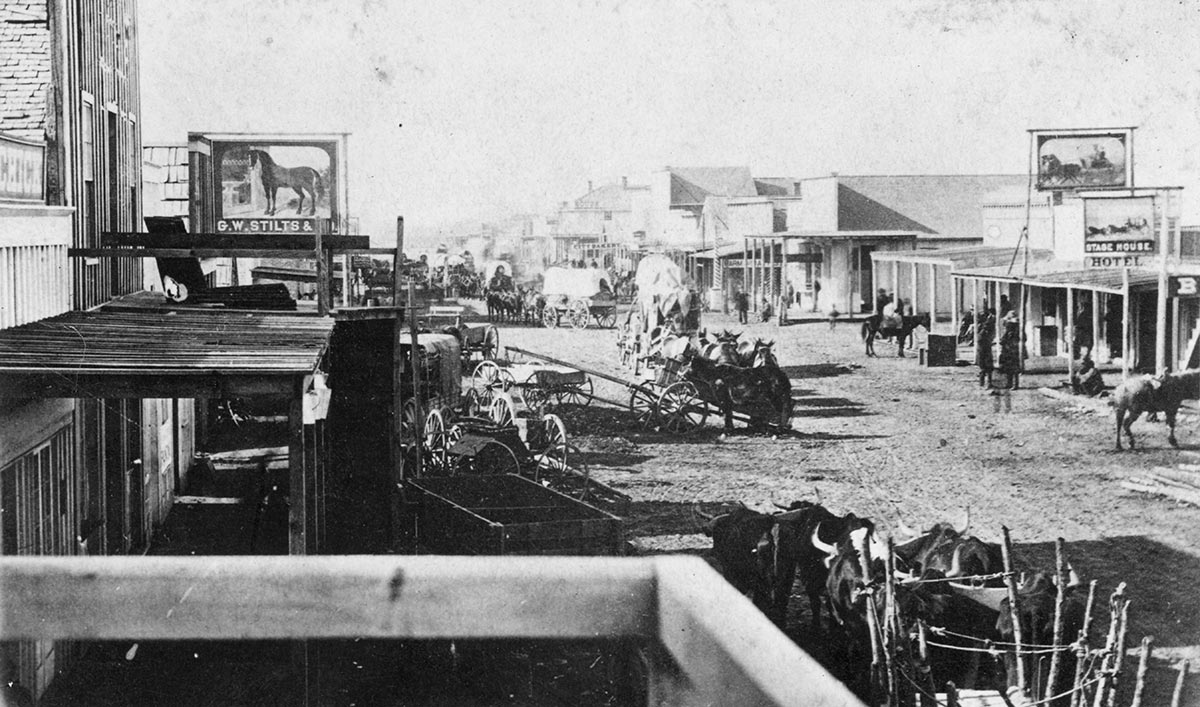
We always assumed that Western films of the 20th century took some creative liberties when it came to depictions of the Wild West, but we have to admit that when it comes to shots of old western towns, they did a pretty accurate job!
What specific town this photo is showing is a mystery lost to history, but it's believed that the picture was taken around 1870. It looks just like we always pictured the Wild West!
The Wild West in Color

Black and white photos would be the norm for many years after the invention of photography, but even in the early years, photographers were finding ways to add a little pop of color to their works.
This photo of a Native American woman was taken by F.J. Haynes in the 1880s. Despite initially being in black and white, Haynes painstakingly hand-painted color onto the portrait to give it even more life.
The Western Saloon

The western saloon is a staple of the old west. Saloons welcomed all walks of life at the time, including fur trappers, soldiers, cowboys, lawmen, businessmen, miners, gamblers, outlaws and just about everyone else. The first saloon was established at Brown's Hole, Wyoming in 1822. It mostly served fur trappers.
Initially saloons served homemade whiskeys, but later started importing whiskeys from Europe. Beer would be served at room temperature because refrigeration wasn't really a thing. Sallons would become more and more common in the west. Wyatt Earp owned several saloons in his lifetime and partnered with others. The saloon in the photo is Toll Gate Saloon, taken in 1897.
Annie Oakley
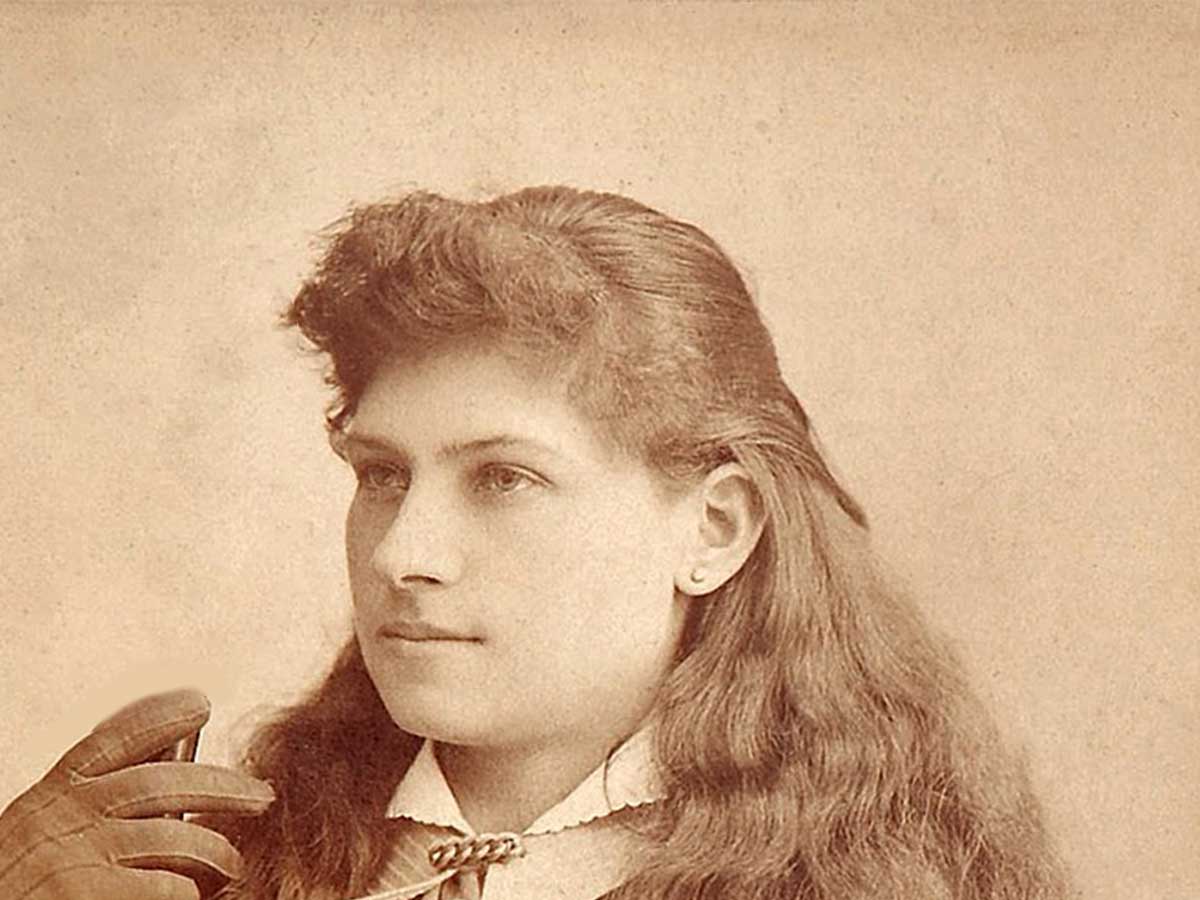
Annie Oakley is an American sharpshooter who starred in Buffalo Bill's Wild West show. Oakley had developed her skills as a sharpshooter as a small child. By the age of 15, she won a contest against a more experienced marksman, Frank E. Butler, whom she married later on. They both joined Buffalo Bill's show in 1885.
During the show, Oakley demonstrated her skills, wowing audiences – even getting a cigar out of her husband's lips. However, after a rail accident in 1901, she joined a play centered around her career and also began instructing women in marksmanship, believing self-defense to be of the utmost importance.
Butch Cassidy and the Wild Bunch
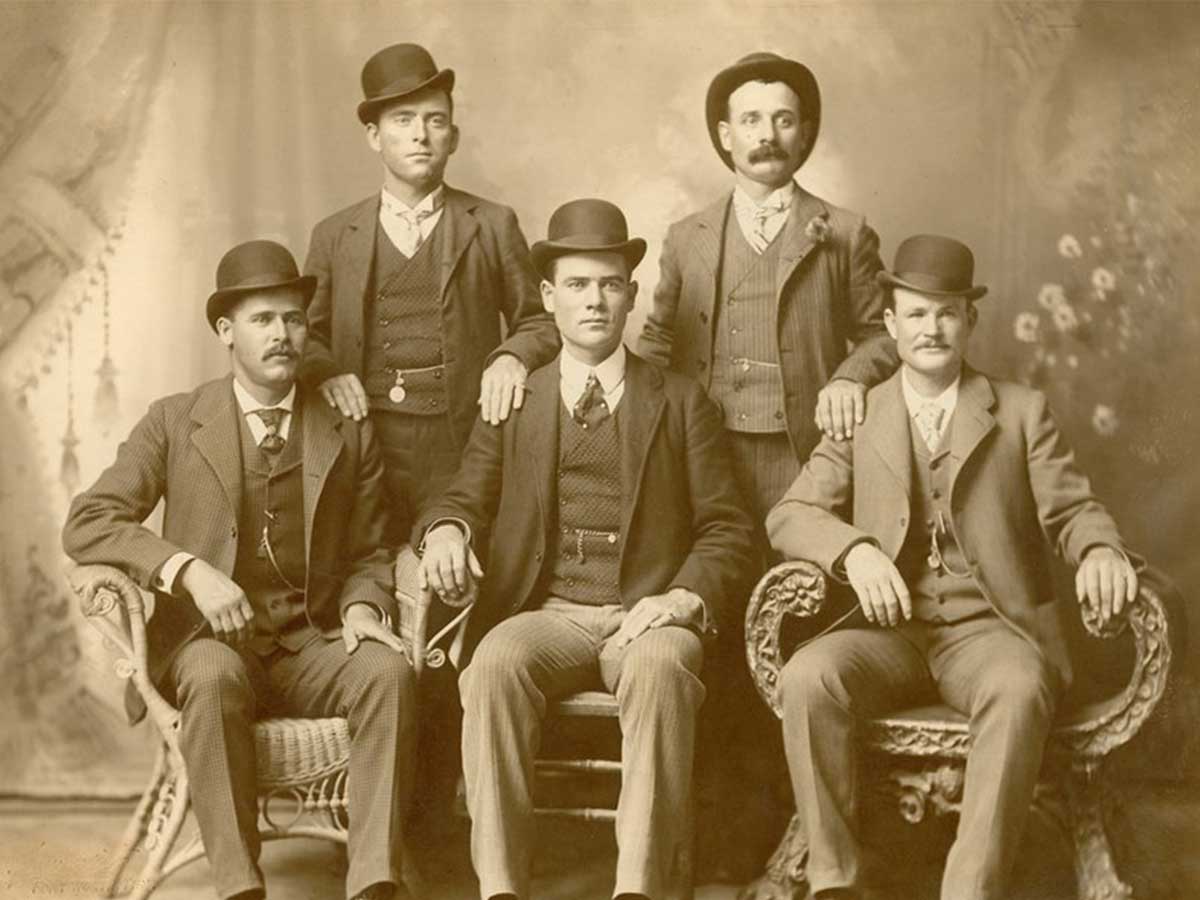
Butch Cassidy's Wild Bunch was the name of an outlaw gang operating in Wyoming. Previously, it had been known as the 'Hole in the Wall Gang.' The gang was led by Butch Cassidy and was immortalized by the 1969 film Butch Cassidy and the Sundance Kid. The gang is often touted as the most successful train-robbing gang in history.
There were 19 members of the gang in total and in one of the gang's first robberies, three of them stole between $30,000 to $60,000. In the early 1900s the gang quickly disbanded, evading lawmen with varying degrees of success. Butch Cassidy and his best friend, the Sundance Kid, were believed to have been killed in Bolivia in 1908.
Giant Redwoods

Explorers had lots to be excited by in the Wild West, but one of the most awe-inspiring things would have to be viewing the giant redwoods of California for the first time.
In this photo, General John Charles Fremont of the American Army joins arms with friends and family to recreate the size of these massive natural wonders.
Rose Dunn
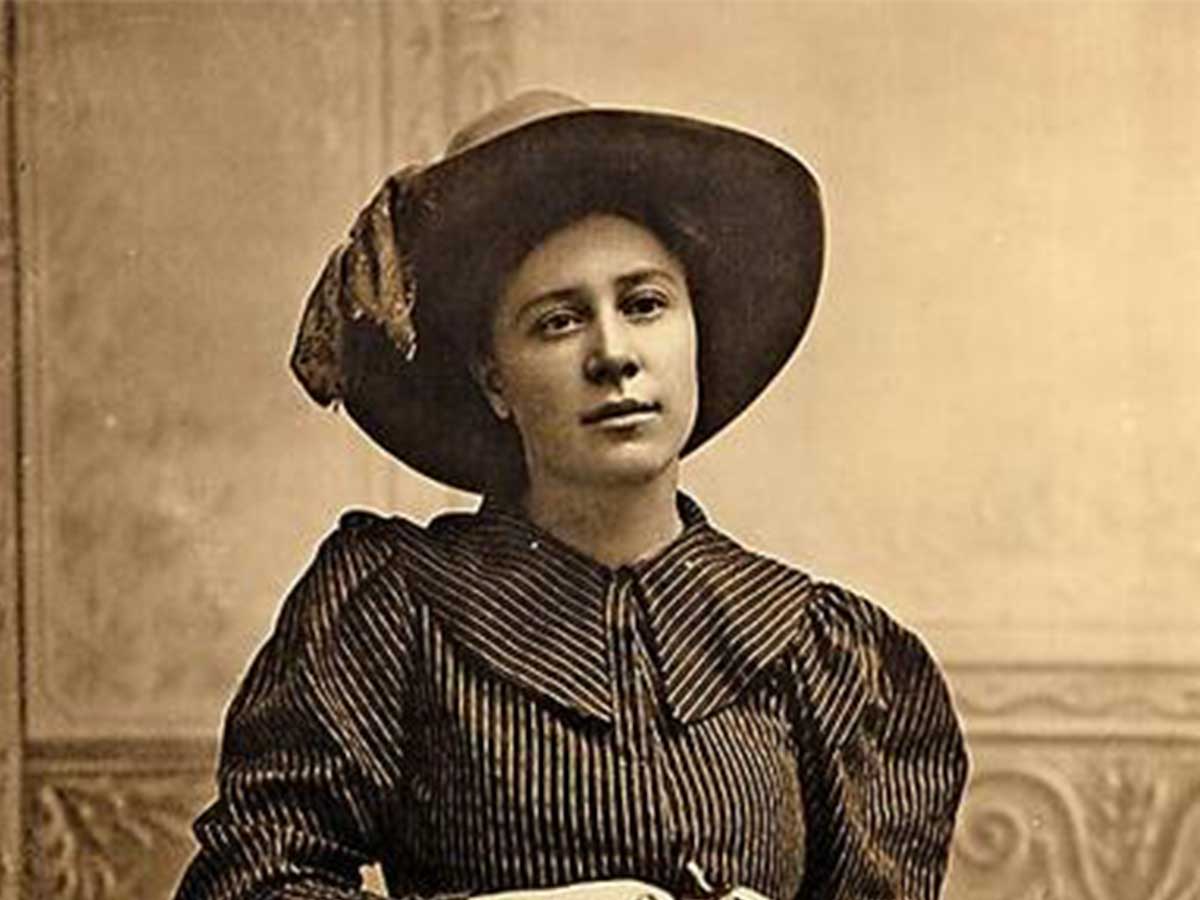
Rose Dunn was one of the most beautiful women of the old west. She was best known for her relationship with George Newcomb, an outlaw, whom she met when she was a teenager. She came from a poor family but was educated nevertheless. She ran with Newcomb and his gang who were incredibly protective over her.
Eventually, Newcomb and the gang were cornered by US marshals and the Battle of the Ingalls commenced. There, Newcomb was injured and Dunn helped him escape – allegedly. By 1895, Newcomb had a $5,000 bounty placed on him and was killed that same year by Rose Dunn's brothers who were bounty hunters. Rose had no knowledge of their intentions to collect the bounty.
The Legacy of Jesse James
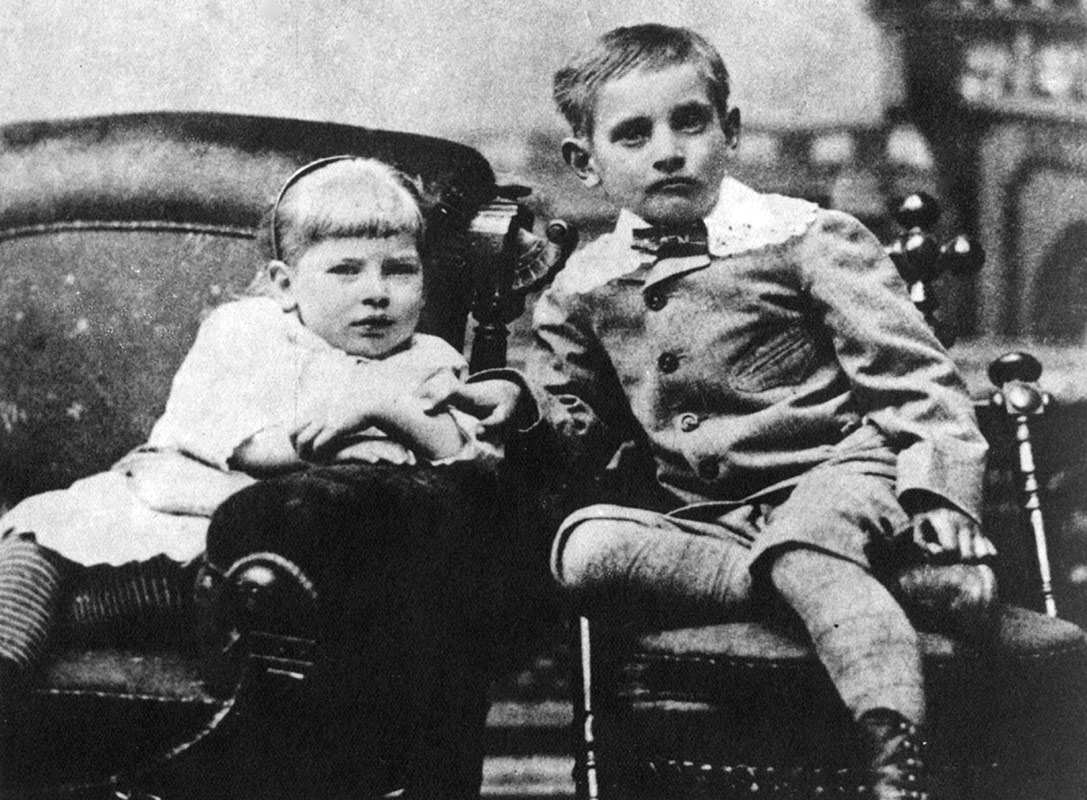
Jesse James was one of the most infamous outlaws the United States has ever seen. Despite his string of crimes that stretched across decades, James still managed to find time to be...a family man?
This photo is a portrait of Jesse James' two children, Jesse Jr. and Mary, that the outlaw had with his wife, Zerelda Mimms. James and Mimms actually had four children together, but two passed away during infancy.
One-Stop Shopping
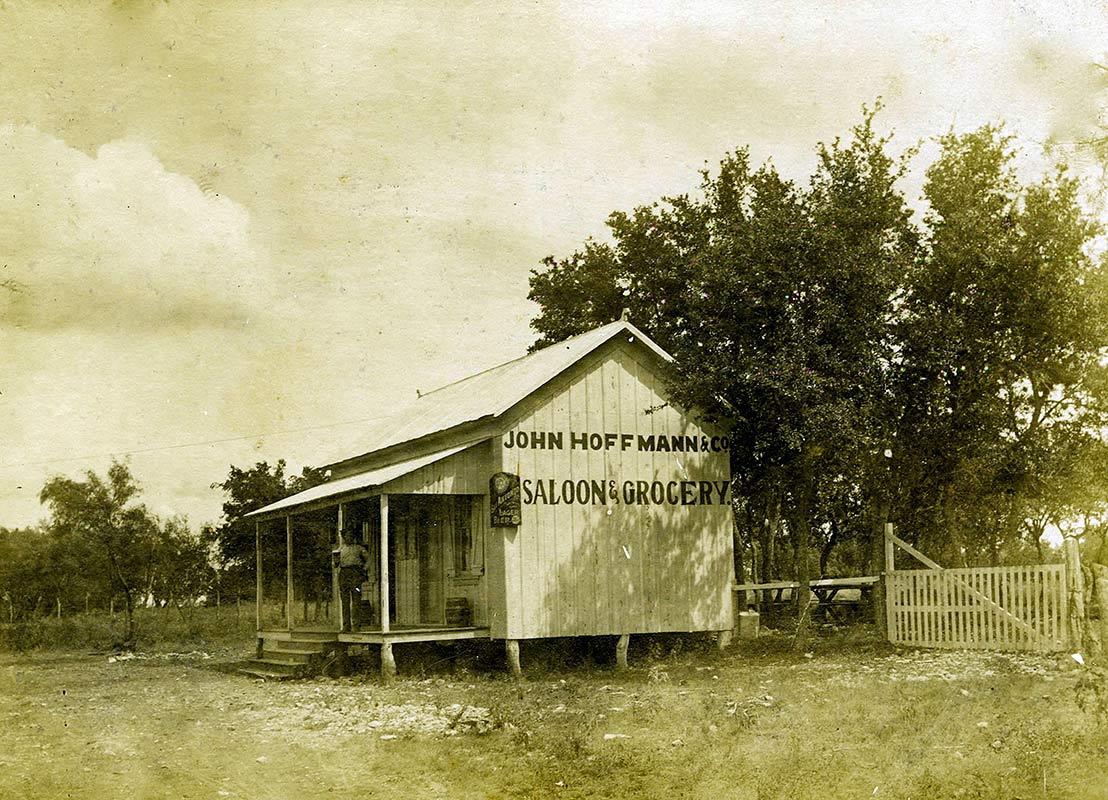
You might think that one-stop shopping is a modern invention, but this photo proves that even people in the Wild West wanted a little convenience!
You probably won't find too many grocery store-saloon combos these days, but honestly, this is one kind of store we'd love to see make a comeback...assuming that no rowdy patrons start a food fight in the produce aisle!
Calamity Jane

Calamity Jane was a sharpshooter, frontierswoman and storyteller. Her exploits became well known to the public and she was a close friend of Wild Bill Hickok. She accompanied him in the town of Deadwood where he was murdered and stayed in the area for some time, even helping aid victims of a smallpox epidemic in the 1870s.
Later in life, she operated an inn and appeared in Buffalo Bill's Wild West show as a storyteller. Calamity Jane was certainly no ordinary woman of the time. In addition to her exploits, she was known for wearing men's clothing and was also a known alcoholic. She drank herself to death in 1903.
The Oklahoma Land Rush
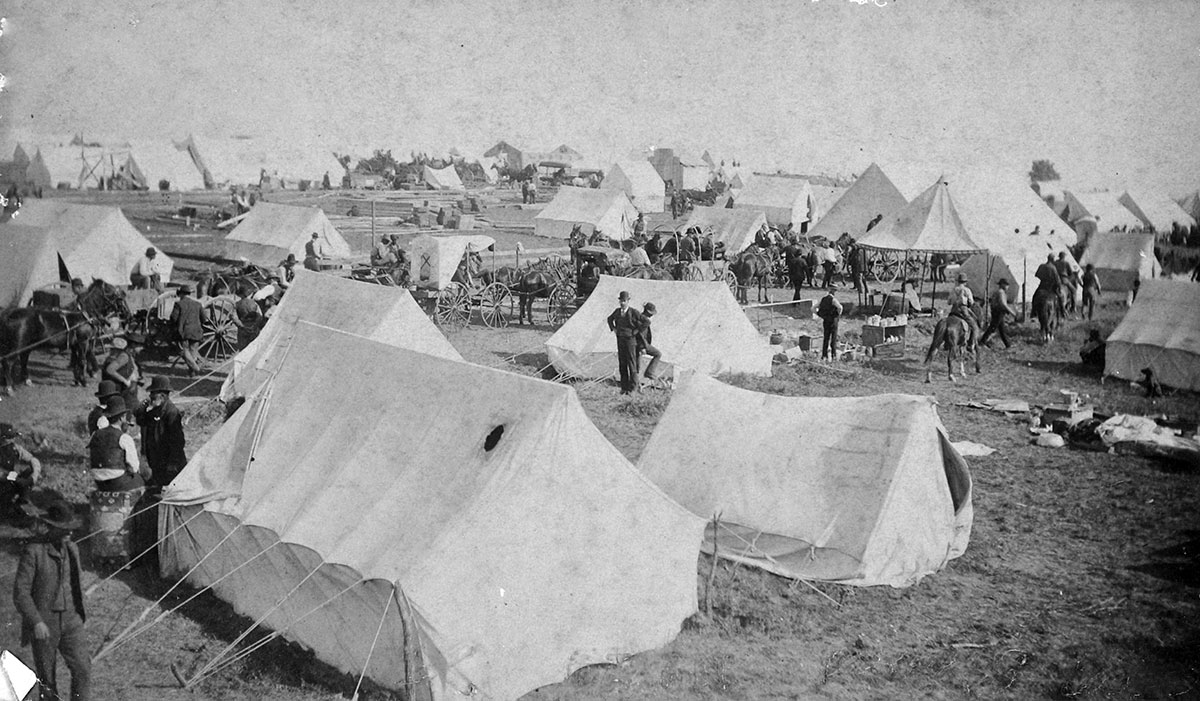
The Oklahoma Land Rush of 1889 opened up former Indian territories in the state and allowed them to be settled by anyone. It's estimated that 50,000 people showed up on the day of the Rush to claim their own parcel.
In this photo, we see people camping during the day of the Rush. In addition to changing the landscape of the United States, the Oklahoma Land Rush also gave us the terms "Sooner" and "Boomer."
Wyatt Earp

Wyatt Earp is another legend – one of the most famous lawmen and businessmen of the West. He worked in Deadwood, Dodge City, and Tombstone. While in Tombstone, he lived among his brothers Morgan and Virgil. Although they had hoped to strike it rich, taking advantage of a silver boom in the area, they would clash with a gang called the Cowboys.
All three Earp brothers had law enforcement positions that really put targets on their backs. One of the most famous conflicts of the time was the shootout at the O.K. Corral. They would assasinate three Cowboys that day and things would escalate from there. Virgil was attacked and Morgan was murdered. Unwounded, Wyatt Earp went after the men he thought were responsible.
The Morning Commute
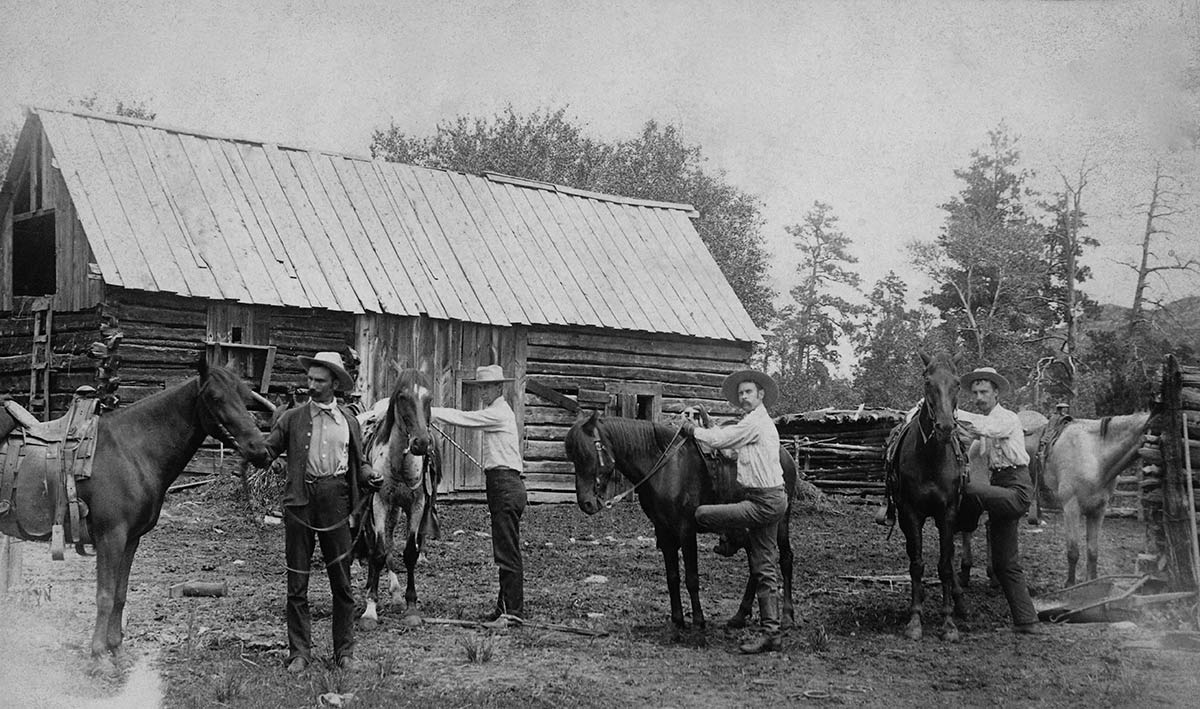
If you thought getting up early only to deal with bumper-to-bumper traffic during your morning commute was bad, just imagine having to saddle up your horse to make the journey!
This photo shows four men getting ready to mount their horses and head out for a day of work. We're not sure what they're setting out to do, but, like most things in the Wild West, we imagine it was a lot of hard work!
Crazy Horse

Crazy Horse was the Lakota war leader of the Oglala band during the 19th century. He famously rose against the federal government to defend themselves against white settlers who were intruding on native American territory. He fought in the battles of the Black Hills War, including the Battle of the Little Bighorn.
His victory led to respect from both his own people as well as his enemies. By 1877, however, he surrendered to US troops under the command of General George Crook and was fatally wounded four months later. He was stabbed by a military guard after allegedly resisting imprisonment.
Guarding a Stagecoach
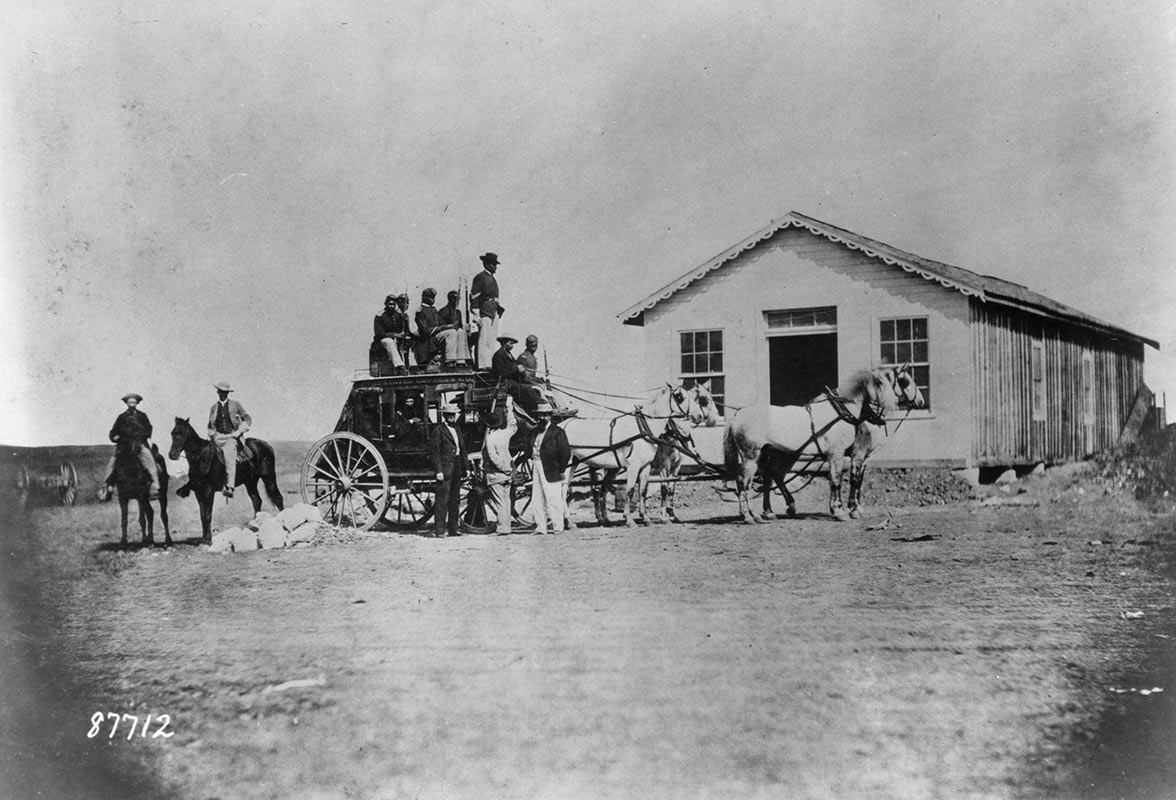
Stagecoach travel was incredibly common in the late 19th century, but there was always the fear of being robbed during every trip. Guards for protecting the people and property onboard were a must during the Wild West.
In this particular photo, a stagecoach is being guarded by members of the Buffalo Soldiers. These were members of an African American Army regiment that frequently served on the frontier during this period.
Life on the Frontier
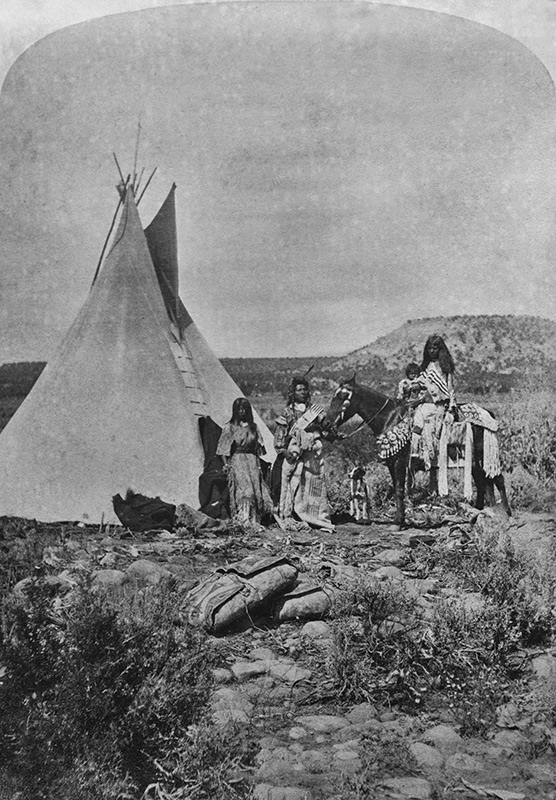
In 1861, a presidential order decreed that the land in the Unita Basin in eastern Utah would become an Indian reservation for the Northern Ute people. In this photo, we see a Ute family (including a family dog) posing by a tipi.
The land surrounding the Unita Basin remained an Indian reservation until 1905, when it was opened up to all American citizens. A community of almost 10,000 continues to live in a community near the area.
Jesse James
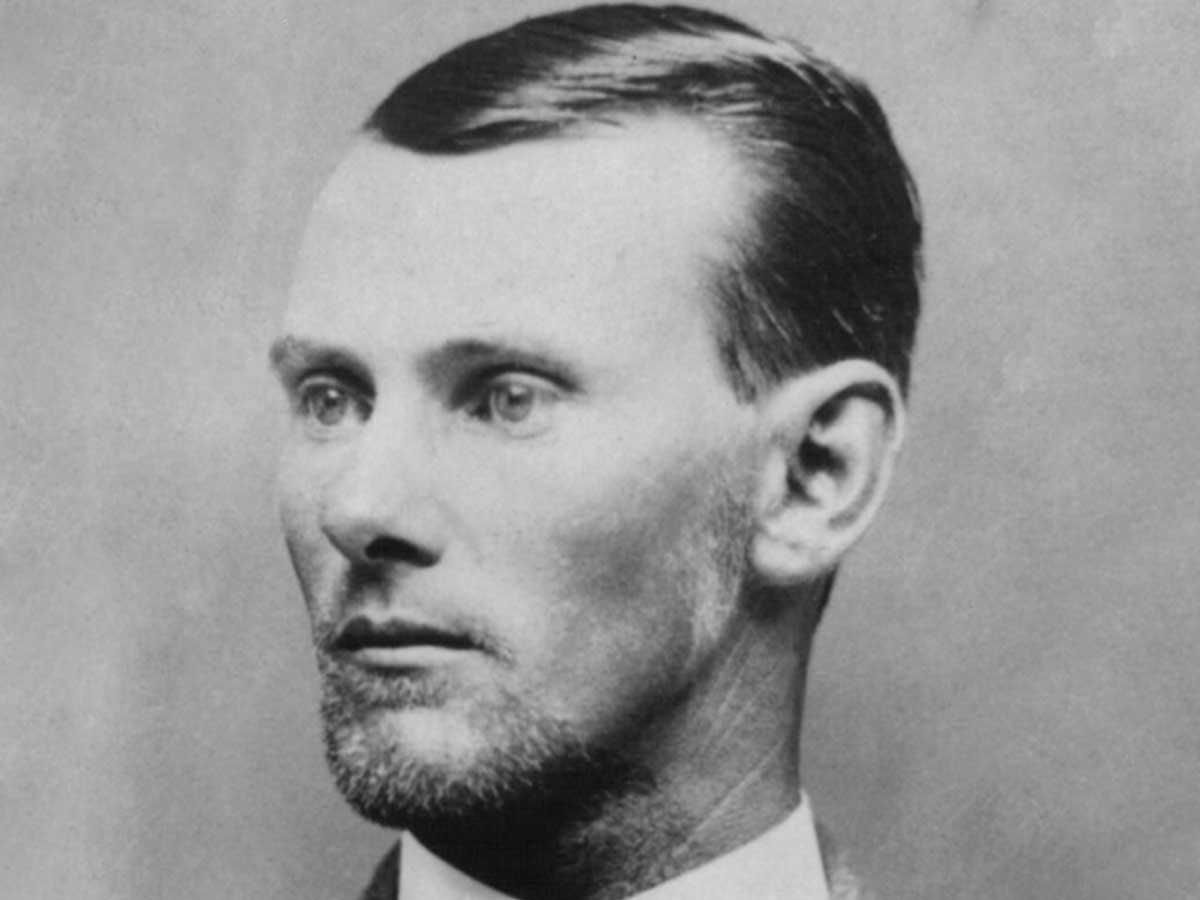
Jesse James is one of the most famous outlaws of his time and even today, the subject of numerous films and literature. And while there is a whole mythos of him being a Robin Hood type figure, the truth is far from it. In his younger years, Jesse James fought alongside his brothers as a guerilla confederate fighter during the Civil War, allegedly committing terrible atrocities against abolitionists and Union soldiers.
After the war, Jesse James became an outlaw, robbing banks and trains. They became famous for their crimes and earned sympathy from the public, despite the brutal nature of the crimes they committed. During their 15-year crime spree, James and his gang are believed to have killed as many as 17 people. Fe would be shot and killed by a new recruit, Robert Ford, in 1882. Ford was looking to collect a reward and was promised amnesty for the death of Jesse James.
A Meal Fit for a Cowboy

We can't imagine that cowboys were particularly skilled chefs, but anything tastes good after a day of hard work on the frontier of the Wild West!
This photo shows a group of cowboys sharing a meal by the chuckwagon after a day of working. Exactly when and where this photo was taken remains a mystery.
Frontier Days

The Wild West might be ancient history by this point in time, but the spirit of the frontier is still alive and well. Cheyenne Frontier Days is an event that first took place in Wyoming in 1897 and continues to this day.
In this photo, we see a group of Native Americans on horses getting ready to take their place in the Frontier Days parade. The exact year of this photo is unknown, but it's believed to be from the 1930s.
Wild Bill Hickok
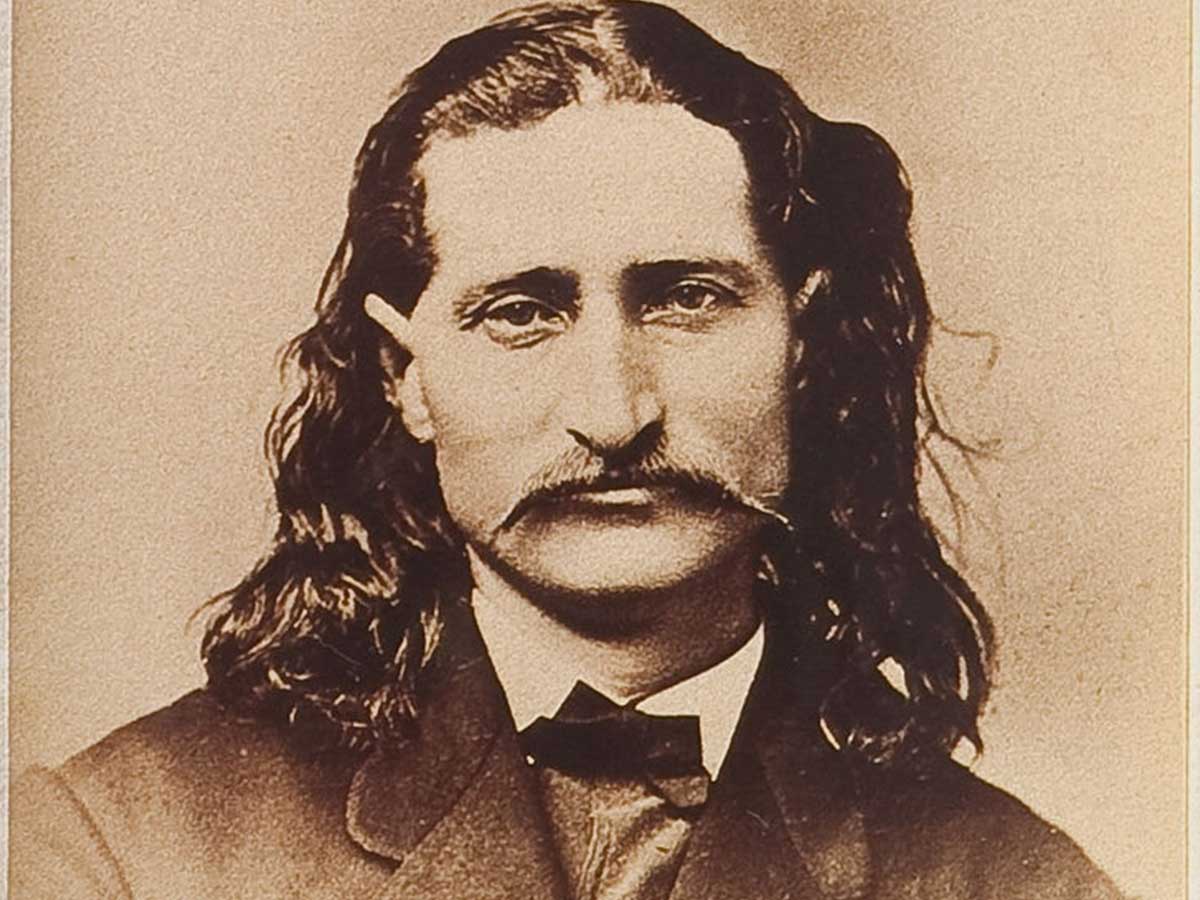
Wild Bill Hickok was a hero of the old west and a celebrity in his own right, working as a scout, soldier, lawman, gambler, showman and so much more. He had also been involved in many gunfights but many of the stories he told were often outlandish and by modern historians considered to be fabrications.
He began his younger years as an outlaw before becoming a man of the law. During the Civil War, he worked for the Union army as a spy, and after the war, he became a scout, marksman, gambler and even an actor. In 1876, Wild Bill Hickok was killed by Jack McCall while playing poker in Deadwood.
Photographing the Photographer
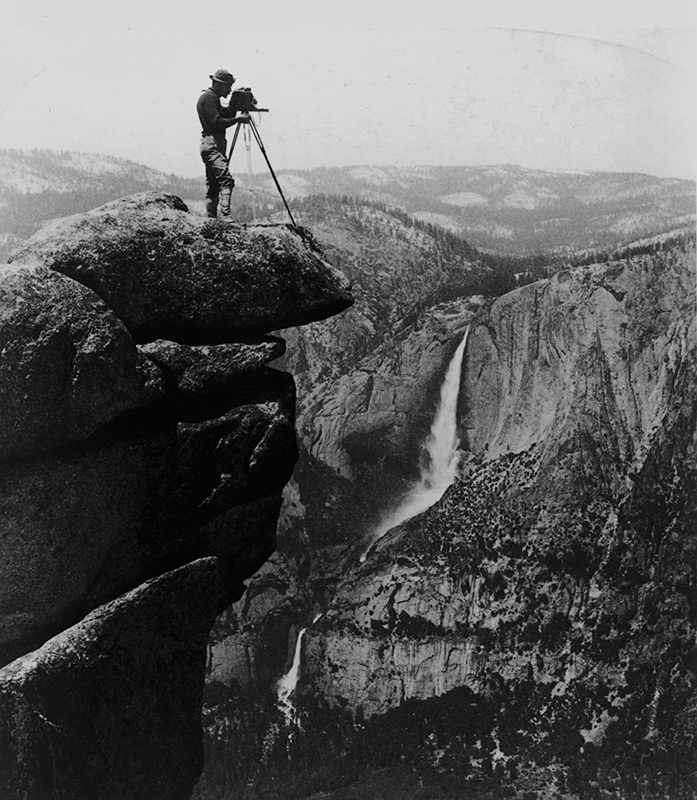
Despite the fact that photography was still a new art form during the era of the Wild West, the photographers of the time really hit the ground running. Some weren't afraid to flirt with danger to get the perfect shot.
In this image, we see photographer William Henry Jackson trying to get the perfect shot of Yosemite Falls. Let's hope that he got a good one because that seems like a lot of trouble for a photo!
The Sioux Nation
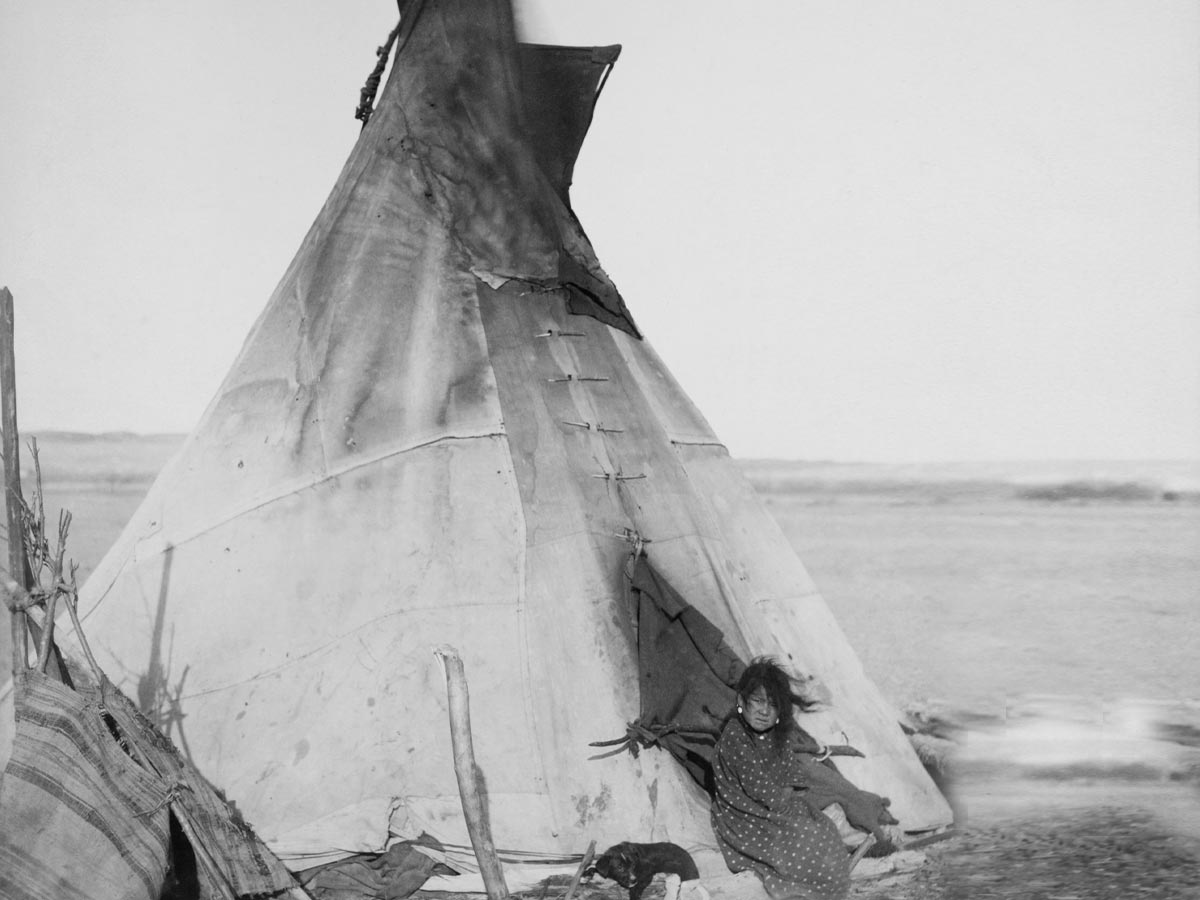
The Great Sioux Nation was made up of three subdivisions: the Lakota, Western Dakota, and Eastern Dakota. All of these subdivisions speak the Sioux language. The traditional social structure of the Sious replies on kinship to the human world, as well as to the natural and supernatural. The Sioux had a defined system of government and gender roles.
The Sioux first had contact with Europeans in the 17th century. By the late 17th century, they would trade with the French and in the 19th century created treaties with the American government. Being continuously pushed out by the American government, the Sioux fought back in the Great Sioux War of 1876, but the Battle of Little Bighorn and the Massacre at Wounded Knee was a turning point for the worst.
Buffalo Bill's Wild West
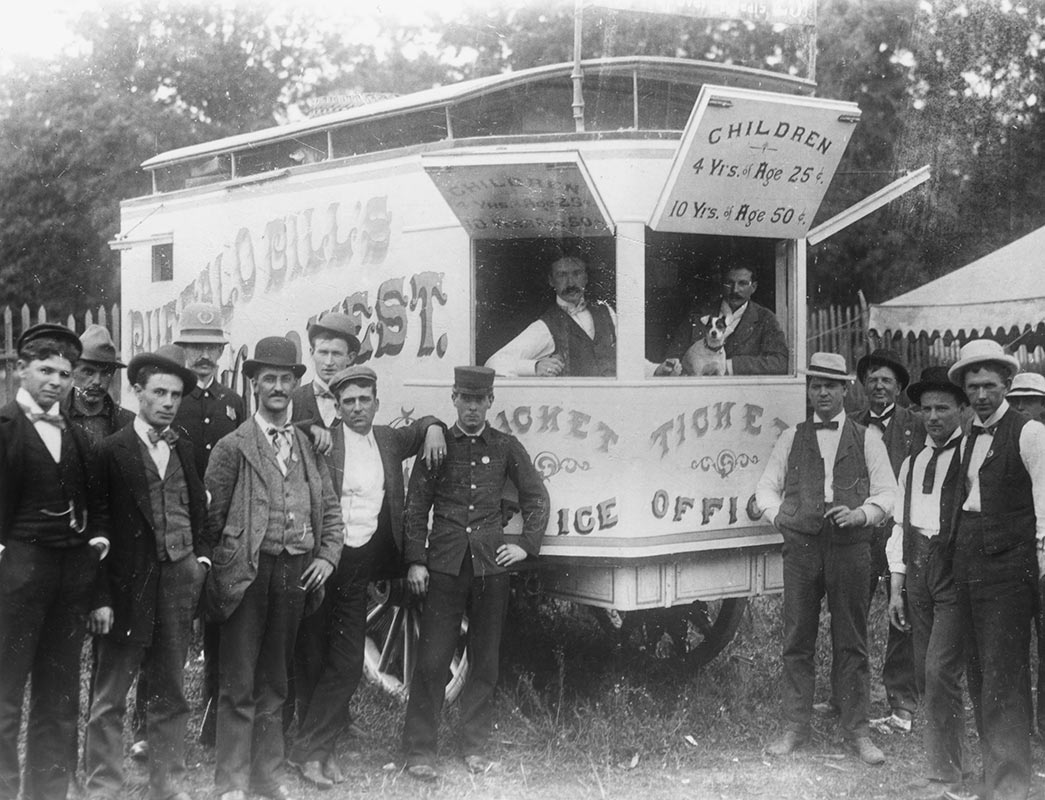
In 1883, "Buffalo" Bill Cody had a brilliant idea to take his adventures on the American frontier and turn them into a vaudeville show. The marketing for the show was cutting edge for the time, including things like celebrity endorsements and billboard advertisements.
In this photo, we see a group of men huddled around the ticket booth for Buffalo Bill's famous show. Good luck buying a ticket to anything these days for only 50 cents!
The Railroad

The First Transcontinental Railroad, also known as the Pacific Railroad, was 1,912-mile railroad constructed between 1863 and 1869. It connected two existing railroads in Iowa and San Francisco. It was built by three private companies on public land.
For people moving west, the First Transcontinental railroad, made things easier than ever. Built by white and Chinese workers, although the Chinese were not treated equally. They received lower wages and had to sleep in tents, meanwhile, white workers had accommodations in the train cars.
Worlds Collide
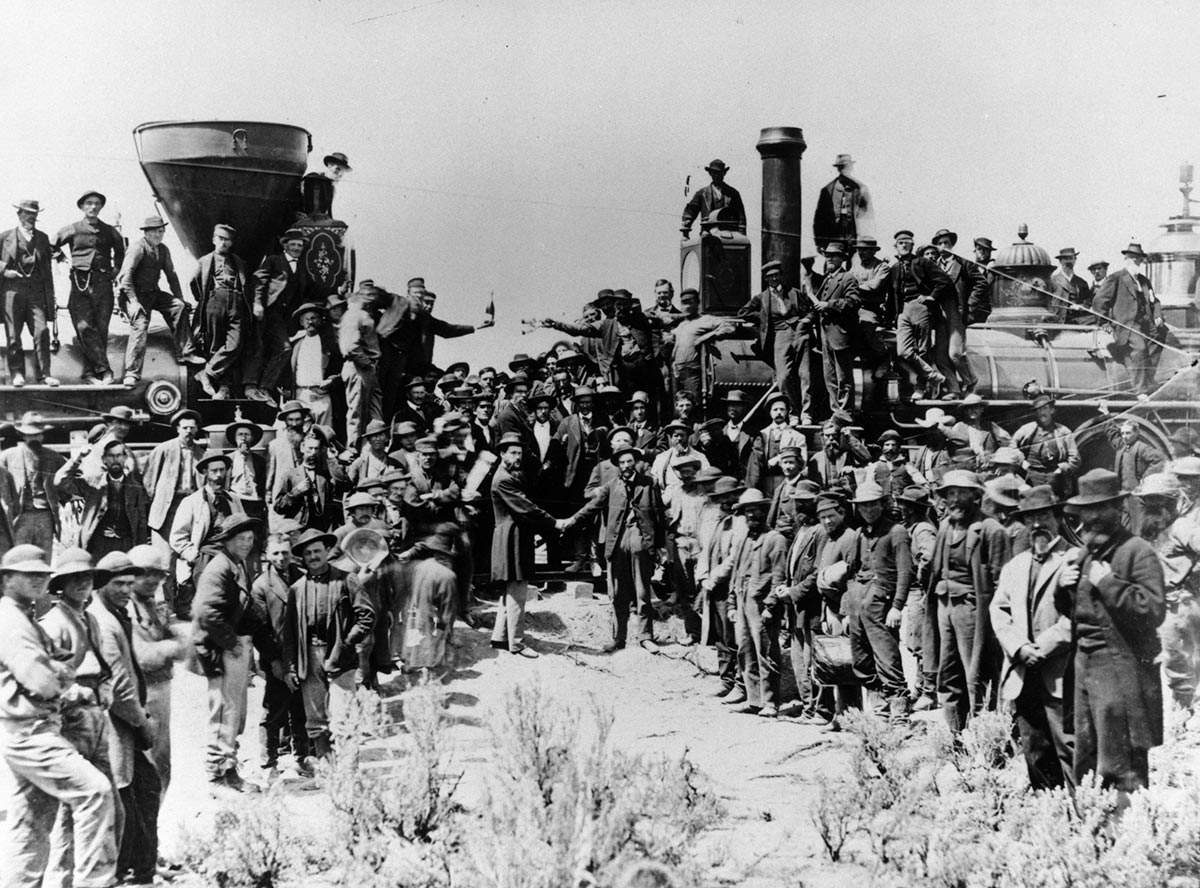
The Transcontinental Railroad was completed in 1869 and marked a significant change in how products were shipped across the continent. In this photo, we see a group of workers celebrating the official completion of the project.
To mark the occasion, trains from both the Union Pacific Railroad and Canadian Pacific were brought together and christened with champagne bottles. It may have been the Wild West, but they still knew how to celebrate!
Historic San Francisco
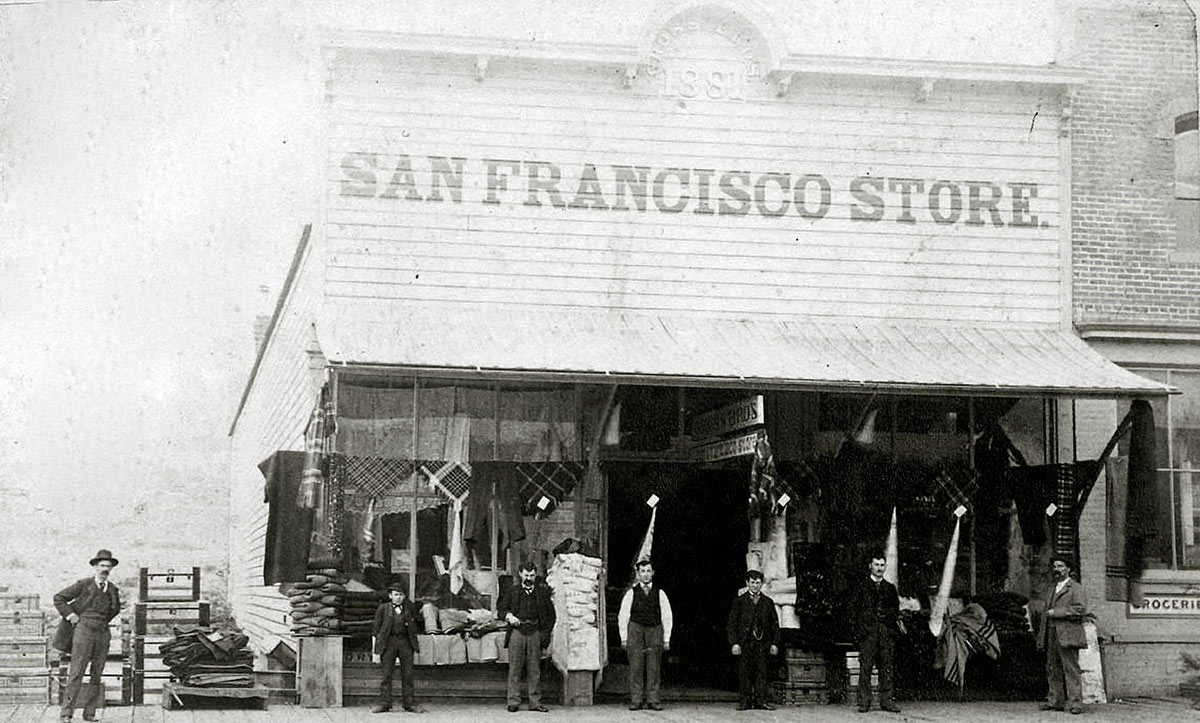
These days, when you think of San Francisco, you probably imagine trolleys or the Golden Gate Bridge. However, despite its size now, it was once a small town on the edge of the Wild West.
In this photo, we see a shot of a mercantile store in the city around 1885. It's unclear if the people featured are workers at the store or simply passers-by who wanted in on this photo!
Olive Oatman
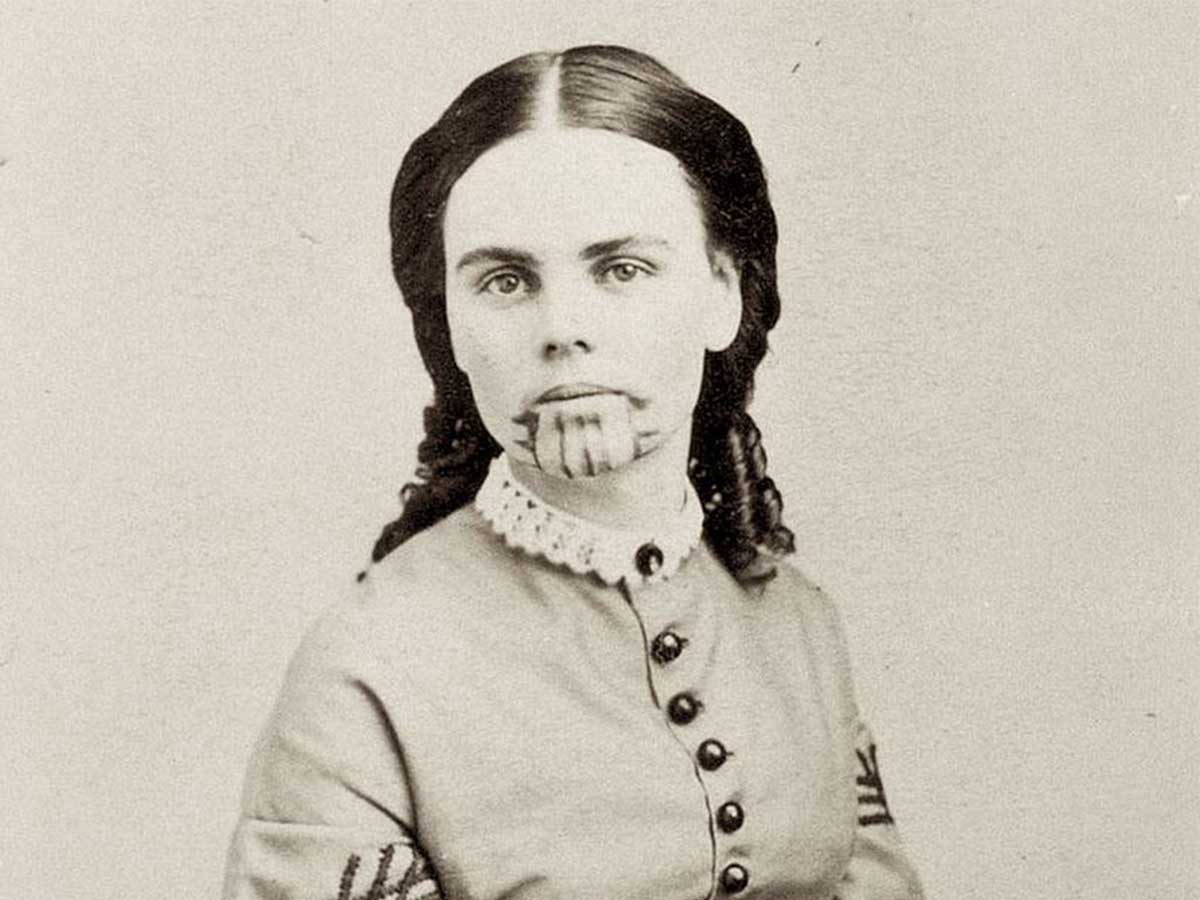
Olive Oatman was an Illinois woman who was traveling to California with Mormon Brewsterites when suddenly her family was attacked by a Native American tribe. Many of the people she was traveling with were killed and her brother was left to die. Olive and her younger sister, Mary Ann, were held captive for a year before being traded to the Mohave people.
Olive's brother Lorenzo was not dead, however, and he continued to look for her and her sister. Unfortunately, Mary Ann died of starvation and Olive lived with the Mohave for four years. She eventually returned to American society and the story of her family's murder was retold, albeit with some dramatic license. Her face tattoo which she got during captivity was famous but she often wore a veil to cover it up. She eventually married and lived a relatively peaceful life thereafter.
Billy the Kid

Billy the Kid is another one of the most famous gunfighters in the west. The outlaw had killed a total of eight men before he was killed at the age of 21. He was also allegedly tied to the murders of three people in New Mexico's Lincoln County War.
Born Henry McCarty, Billy the Kid was orphaned at the age of 15. He became an outlaw out of necessity, stealing food when he was 16 years old. After that first arrest, he robbed a Chinese laundry 10 days later and was arrested again. He quickly escaped, however, and became a wanted fugitive. He would be captured for the last time in 1881 and shot by Pat Garrett, who collected a $500 bounty thereafter.
Doc Holliday
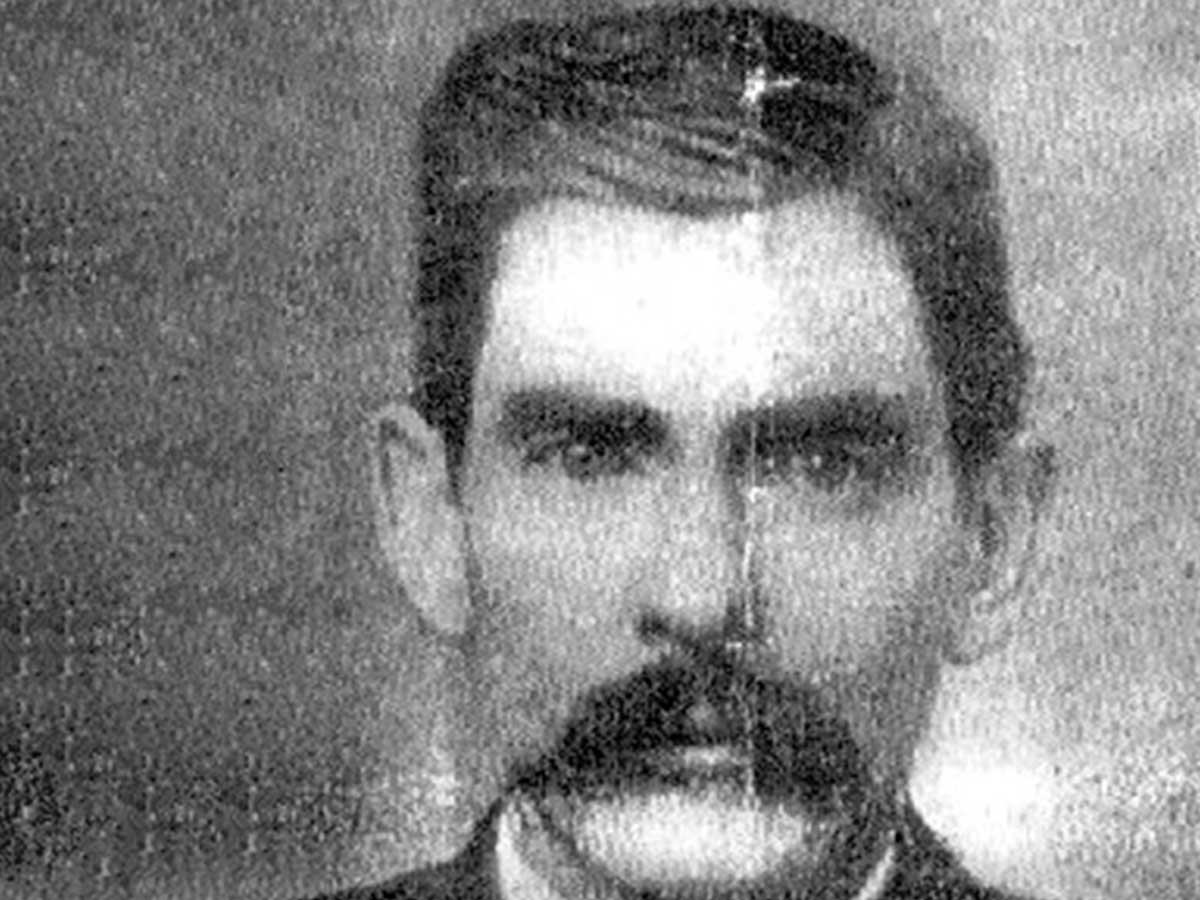
Doc Holliday was a fighter, gambler and what not many realize – a dentist! He earned his degree from the Pennsylvania College of Dental Surgery and setup a practice in Griffin, Georgia. However, it wasn't long before Holliday was diagnosed with tuberculosis, which he acquired from his mother. Hoping to ease his symptoms, he moved Southwest, seeking a drier climate, and became a gambler.
Doc Holliday was also an associate and close friend of Wyatt Earp. They became friends after Holliday saved Earp in Texas. They would join up together in Las Vegas, New Mexico, then Prescott, Arizona, and finally Tombstone. Holliday would participate in the gunfight at the O.K. Corral along with Earp and his brothers. Holliday would even become deputized by Virgil Earp. He spent the last years of his life in Colorado and died at the age of 36.
 Author
Ron Winkler
Last Updated: November 25, 2025
Author
Ron Winkler
Last Updated: November 25, 2025